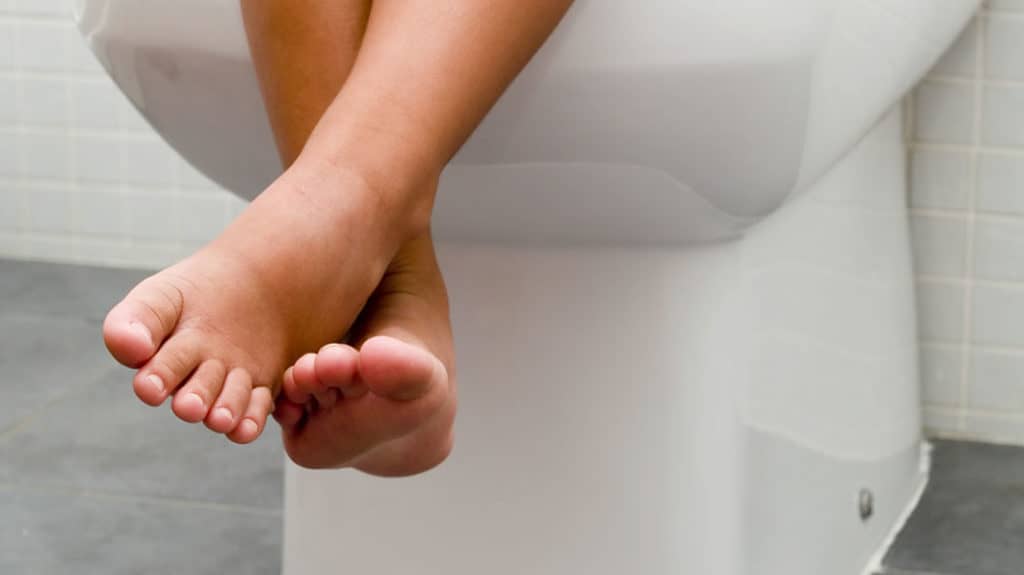
Family Legacy: Why Should We Care?
If we don’t intentionally pass on a family legacy consistent with our beliefs and values, our culture will pass along its own.

How do you get your toddler over this frustrating step?
Many parents dream about the day when their children will go to college, find true love, and start their own family. But first… they hope to get them potty trained! As one of the major milestones in childhood, right up there with learning how to walk and talk, potty training can at times seem overwhelming.
Most children in the United States are potty trained by age two, though some begin much earlier and others much later. The common practice for potty train instruction is for a parent to purchase a portable plastic potty chair that has a removable waste bowl. The child is encouraged to sit on the chair to go potty, as opposed to relieving himself into a diaper. Eventually the detachable seat is moved onto a conventional toilet for the child to sit on. Sounds easy right? Unfortunately there can be barriers that can delay a toddler from successful potty training. Here are a few:
Earlier is not always better. Your child must be old enough to understand the training process. According to Author and Pediatric Physician, Dr. James Sears, a toddler must be aware of what is happening. “If you see him make a funny face right before he goes, or try to imitate daddy standing at the toilet, those may be signs of readiness,” says Dr. Sears. “Also, if he’s able to verbally communicate other sensations such as, ‘I’m hungry’ or ‘I’m tired,’ then he should be able to communicate when he needs to go potty.”
Your latest bathroom accessory might be frightening your toddler. Try to alleviate fears by making the potty chair fun and familiar. Invite your toddler to paint or decorate the chair with stickers. Also, use the potty chair for other things like sitting on it while watching cartoons. Dr. Sears reminds parents to make sure your toddler’s feet can touch the floor, or rest on a stool. Dangling feet can seem scary and uncomfortable, not to mention deter the bowels from moving.
Some toddlers don’t like change, and some behaviors, like going in a diaper, are difficult to unlearn. Dr. Sears suggests encouraging a resistant child by using an incremental potty training technique. “The first step is to tell the child that he can go in his diaper, but the act must occur in the bathroom. The next step is to allow him to go into his diaper, but he has to sit on the potty chair while going. Then a ‘magic diaper’ is put on. It is a diaper cut with a giant hole in it, allowing waste to go into the potty chair. Finally, the diaper is removed and the child uses the potty chair.”
Some toddlers require an incentive to potty train. Sticker charts or candy treats may be the carrot your child needs to move forward to becoming potty trained. Another suggestion is to place a packaged prize on the back of the toilet, to be opened only after the child has reached the milestone of using the toilet.
Many times parents feel compelled to potty train due to peer pressure or preschool compliance, but forcing a child before he or she is ready can prove to be counterproductive. “What often happens when you put pressure on the child,” says Dr. Sears, “is that he doesn’t want to go, so he starts holding it. Then as a result he becomes constipated. You go from someone who goes in the diapers all the time to someone who doesn’t want to go ever, because it’s going to hurt. That problem can take many months to a year to fix.” Rather, parents need to exemplify patience, and may need to find a different preschool that allows diapers. Of course a child that is having difficulties going to the bathroom needs to be checked out by the family’s pediatrician.
The overall goal of potty training your toddler can be achieved by knowing when to seek medical assistance or help, dispensing a great deal of patience and understanding, and staying attuned to the needs of your child. Most importantly, try to keep the big picture in mind.
Some parents, realizing the environmental impact that diapers place upon the environment, have decided to “go green.” For some that means purchasing biodegradable diapers that are more “earth friendly,” like those advertised on the gdiapers.com website, while others have begun to entertain a less conventional potty training method referred to as “Infant Potty Training” or IPT. You are welcome use your web browser for more information on this method.